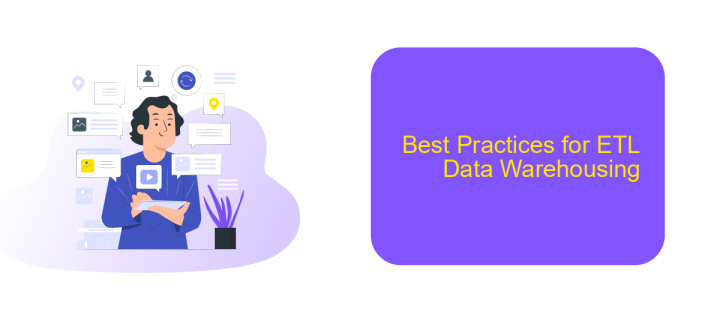ETL Data Warehousing
ETL (Extract, Transform, Load) is a crucial process in data warehousing that involves extracting data from various sources, transforming it into a suitable format, and loading it into a centralized data warehouse. This process ensures data consistency, quality, and accessibility, enabling businesses to make informed decisions based on comprehensive and accurate datasets. In this article, we explore the key components and benefits of ETL in data warehousing.
Introduction to ETL Data Warehousing
ETL (Extract, Transform, Load) is a fundamental process in data warehousing that involves extracting data from various sources, transforming it into a suitable format, and loading it into a data warehouse. This process is crucial for businesses to consolidate data from disparate sources into a single repository for analysis and reporting.
- Extract: Data is collected from multiple sources, such as databases, APIs, and flat files.
- Transform: The extracted data is cleaned, filtered, and transformed into a consistent format.
- Load: The transformed data is loaded into a data warehouse for storage and analysis.
Effective ETL processes enable organizations to make data-driven decisions by providing accurate and timely data. Tools like ApiX-Drive facilitate seamless data integration by automating the extraction and loading processes, reducing the complexity and time required for manual data handling. By leveraging such services, businesses can ensure that their data warehousing solutions are both efficient and scalable.
Benefits of ETL Data Warehousing

ETL Data Warehousing offers numerous advantages for businesses seeking to optimize their data management and analysis processes. By Extracting, Transforming, and Loading data from various sources into a centralized data warehouse, organizations can ensure data consistency, accuracy, and accessibility. This streamlined approach facilitates better decision-making, as it provides a single source of truth for all data-related activities, reducing the time and effort required to gather and analyze information from disparate systems.
Additionally, ETL processes enable seamless integration with various data sources and tools. Services like ApiX-Drive can further enhance this integration by automating data transfers between applications, ensuring that data is always up-to-date and readily available. This level of automation not only saves time but also minimizes the risk of human error, enhancing overall data quality. As a result, businesses can focus more on strategic initiatives and less on data management, ultimately driving growth and innovation.
Challenges of ETL Data Warehousing

ETL (Extract, Transform, Load) processes are critical for data warehousing, but they come with their own set of challenges. These challenges can significantly impact the efficiency and effectiveness of data management systems.
- Data Quality: Ensuring the accuracy, consistency, and reliability of data during the extraction and transformation phases can be complex and time-consuming.
- Scalability: As data volumes grow, maintaining performance and scalability of ETL processes becomes increasingly difficult.
- Integration: Integrating data from multiple heterogeneous sources requires robust solutions to handle different data formats and structures.
- Latency: Minimizing the time lag between data extraction and availability in the data warehouse is crucial for real-time analytics.
- Maintenance: Continuous monitoring and updating of ETL processes are necessary to adapt to changing data sources and business requirements.
To address some of these challenges, services like ApiX-Drive can be instrumental. ApiX-Drive simplifies the integration process by providing a user-friendly interface for connecting various data sources, ensuring seamless data flow and reducing the complexity of data integration. By leveraging such tools, organizations can enhance the efficiency and reliability of their ETL processes, leading to more robust data warehousing solutions.
Best Practices for ETL Data Warehousing

Implementing best practices in ETL data warehousing is crucial for ensuring data integrity and optimizing performance. Start by designing a robust ETL architecture that can handle data growth and complexity. This involves selecting the right tools and technologies that align with your business needs.
Data quality is another critical aspect. Ensure that your ETL processes include data validation and cleansing steps to maintain high data quality. Regularly monitor and audit your data pipelines to detect and resolve any issues promptly.
- Automate ETL workflows to reduce manual intervention and errors.
- Utilize incremental data loading to improve efficiency.
- Implement proper error handling and logging mechanisms.
- Ensure data security and compliance with industry standards.
For seamless integration and automation, consider using services like ApiX-Drive. It allows you to connect various data sources effortlessly and automate data flows, thereby enhancing the efficiency of your ETL processes. By following these best practices, you can build a reliable and scalable data warehousing solution.


Conclusion
In conclusion, ETL data warehousing plays a critical role in modern data management, enabling organizations to consolidate, transform, and analyze vast amounts of data efficiently. By streamlining the extraction, transformation, and loading processes, businesses can ensure data accuracy, improve decision-making, and gain valuable insights. The integration of automated tools and services, such as ApiX-Drive, can further enhance the ETL process by simplifying data integration and reducing manual efforts.
As data continues to grow in volume and complexity, the importance of robust ETL data warehousing solutions becomes even more evident. Organizations must invest in scalable and flexible ETL tools to stay competitive and drive innovation. By leveraging advanced technologies and platforms, companies can optimize their data workflows, achieve better performance, and unlock the full potential of their data assets. Ultimately, a well-implemented ETL data warehousing strategy is essential for sustaining business growth and maintaining a competitive edge in the data-driven world.
FAQ
What is ETL in data warehousing?
Why is ETL important for data warehousing?
How often should the ETL process be run?
What are the common challenges in ETL processes?
How can automation tools help in ETL processes?
Apix-Drive is a simple and efficient system connector that will help you automate routine tasks and optimize business processes. You can save time and money, direct these resources to more important purposes. Test ApiX-Drive and make sure that this tool will relieve your employees and after 5 minutes of settings your business will start working faster.

